SEO has come a long way since its early days, and the landscape continues to evolve rapidly. As someone who has witnessed the journey from the days of keyword stuffing to the age of mobile voice search, I understand the frustrations and challenges of keeping up. In this article, we’ll delve into the state of SEO in 2023, addressing the changes and the enduring principles that continue to shape the field.
Embracing Google’s Evolution
Before diving into the nitty-gritty of SEO in 2023, let me clarify: Google remains the undisputed king of search. Its relentless pursuit of innovation and commitment to user experience have solidified its position as the gold standard in search engines. This means that Google services, especially search and YouTube, remain pivotal in any optimization strategy for marketers.
The Importance of Content Marketing in SEO
While the algorithms and strategies have evolved, one thing remains constant: content is king. In 2018, we saw the redefinition of content marketing. It shifted from focusing on appeasing search bots with keyword-stuffed content to providing real value and connecting with real audiences.
Content Optimization Has Been Redefined
In the present day, content has become more diverse than ever before. It’s no longer confined to traditional blog posts and articles. In 2023, content encompasses a wide array of formats and platforms, all to inform, help, and connect with audiences.
The shift in mindset from creating content for search engines to creating content that genuinely serves users has been transformative. It responds to Google’s algorithm updates, penalising low-quality, made-for-SEO content. Many sites that relied on such practices gradually declined in rankings, and some still struggled to regain their positions.
1. Optimize Content for Concepts and Entities, Not Just Keywords
Google’s algorithm has evolved to understand concepts, related entities, and context. Rather than fixating on a single keyword string, organize your keywords into groups by relevancy. Tools like Serpstat can help identify overlapping results in Google SERPs.
Optimizing for a single keyword string used to work well, giving you higher rankings across the board. Yet Google’s algorithm got much smarter, and so should we. These days, Google understands concepts, related entities, and context. Look at the below search result page. Notice how Google isn’t trying to match the query verbatim; instead, it shows various results on the implied topic.
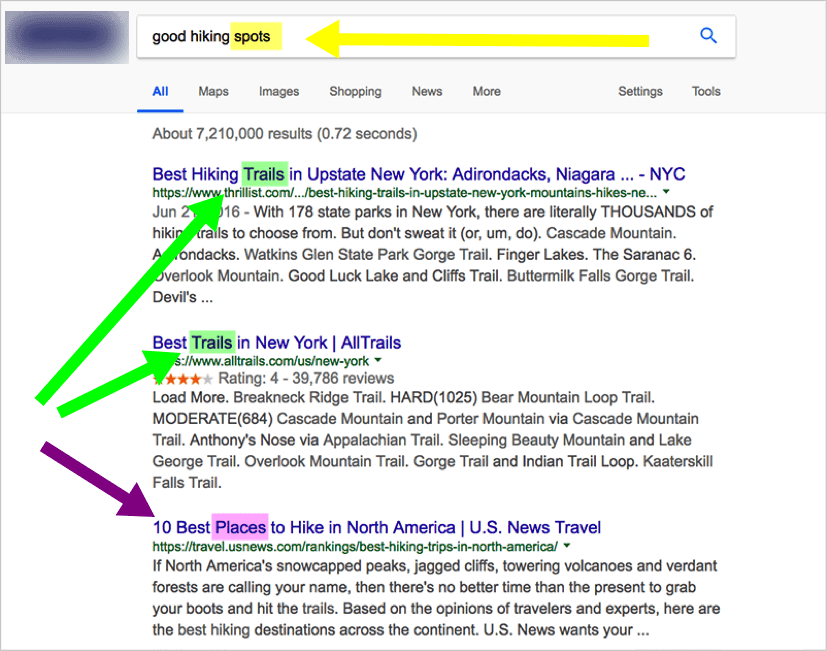
More on this topic: What Is Semantic SEO and How to Optimize for Semantic Search?
To adapt to this algorithm change, use the following tactics:
1.1. Group your target keywords by relevance
Organise your keywords into groups based on relevance to adapt to this new SEO paradigm. Utilize tools like Serpstat to facilitate this process. Serpstat analyzes Google Search Engine Results Pages (SERPs) and identifies overlaps between sets of search results. The more common URLs two sets share, the more closely related the search queries are. This approach allows you to identify underlying concepts and optimize your content for a cluster of keywords rather than a single, narrow string.
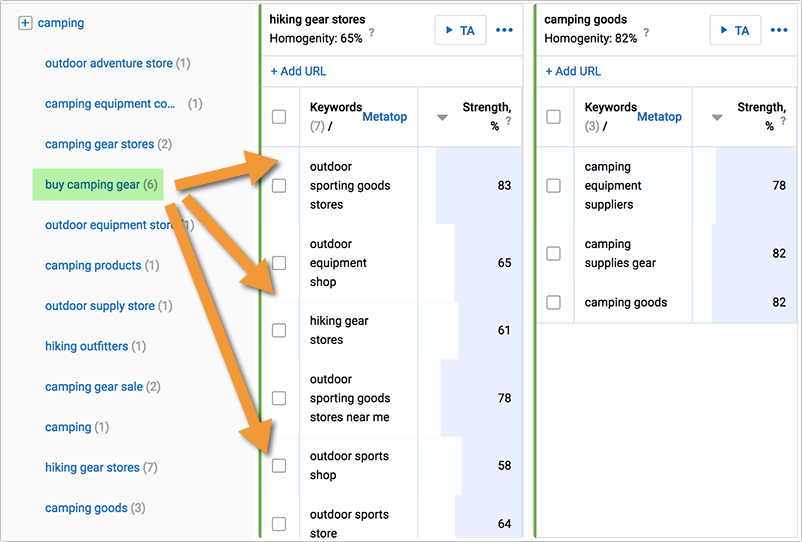
1.2. Extract concepts and entities from competitors’ content
Gain inspiration by studying your competitors’ content and perusing Wikipedia articles to compile a comprehensive list of concepts and entities they cover. Experiment with innovative tools like Watson Natural Language Understanding, which analyzes text to identify mentioned or implied concepts and entities. This exercise will provide valuable insights into the semantic landscape surrounding your niche.
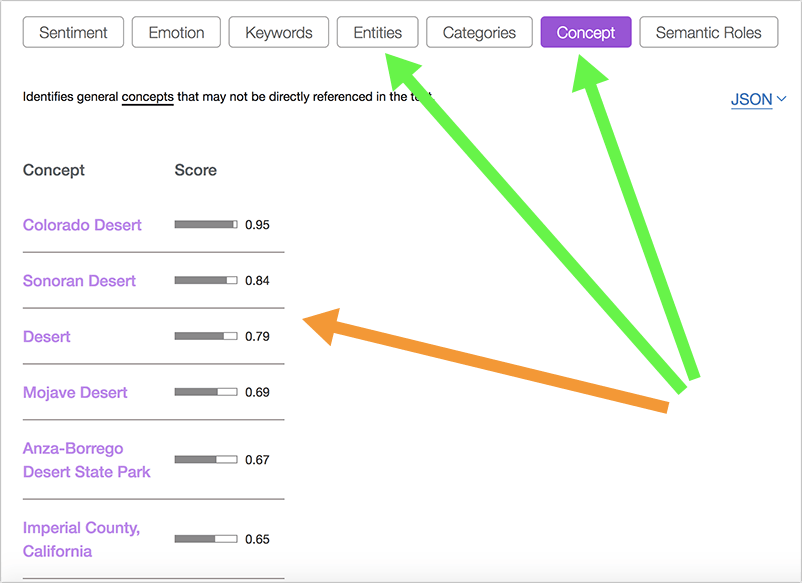
1.3. Dive into Natural Language Context
Understanding the nuances of natural language usage is paramount, both for general keyword research and mobile search optimization. Delve into conversations on platforms like Twitter and Quora, observing how people express themselves, pose questions, and provide answers. These platforms offer rich insights that can inform your optimization strategy. Consider tools like Keyhole to gain a deeper understanding of natural language context by extracting text from tweets and revealing related keywords.

1.4. Finally, make keyword research and content planning a single event
Efficiency lies in merging your keyword research and content planning processes into a unified strategy. As you organize your keywords and explore natural language context (as outlined in 1.1-1.3), construct lists comprising primary, secondary, and tertiary keywords. Simultaneously, identify related content ideas that align with your SEO goals. This integrated approach streamlines your content posting strategy and editorial planning, ensuring that every facet of your marketing strategy complements and informs the others.
2. Broaden Your Content Formats for Enhanced Featured Snippet Performance
The era of voice search is upon us, with predictions indicating that by 2020, a staggering 50% of all mobile searches will be conducted through voice interfaces. To excel in this landscape, grasping how people phrase their queries when speaking is imperative, which often differs from typed searches. Consequently, adapting your content to address longer, more conversational questions commonly posed to voice assistants like Siri is paramount.
Additionally, consider featured snippets’ significant impact on your content’s visibility and engagement. Hubspot conducted a comprehensive study on their featured snippets and unearthed remarkable results. Their findings revealed a notable surge of over 10% in click-through rates, accompanied by a positive overall impact on post traffic. This achievement is particularly noteworthy, given Hubspot’s already substantial standing as an industry-leading authority on Google.
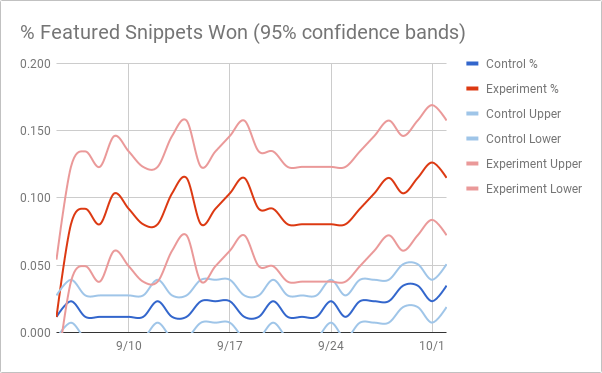
The most effective approach to securing a featured snippet involves thorough research and addressing niche questions. This approach aligns seamlessly with our overarching goal of delivering genuine value to real users over the long term.
Furthermore, enhancing the diversity of your answer formats represents a powerful strategy for optimizing your content to capture featured snippets. Consider the following techniques:
- Concise Paragraphs: Aim for brevity when crafting a response to a specific user query. Provide a precise answer within two to three sentences.
- Bullet Lists: Utilize bullet points when presenting information, particularly when the context implies a list, such as steps, types, or species. This format enhances your chances of securing a featured snippet.
- Tables for Comparison: Tables serve as a valuable tool for delivering informative responses and increasing your likelihood of being featured, especially in scenarios requiring detailed comparisons.
3. Embrace The Era Of Voice Search
Voice search has emerged as a dominant trend in the digital landscape, solidifying its position as one of the fastest-growing search methods. Astonishingly, experts suggest that as many as 55% of teenagers now engage in daily voice searches. Comscore’s estimations further underscore this phenomenon, predicting that by 2020, a staggering 50% of all mobile searches will be voice-driven. This shift should be no surprise given the widespread adoption of mobile search.
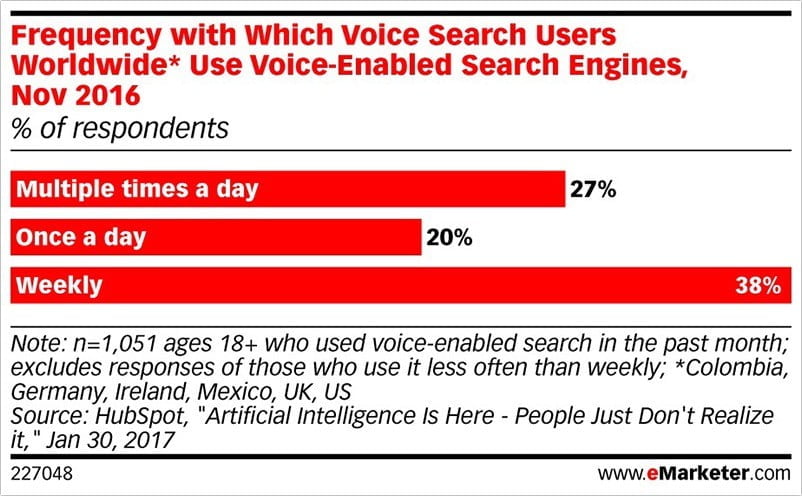
Source: eMarketer
To excel in voice search optimization, begin by contemplating the questions individuals are likely to pose verbally, distinct from their written counterparts. Voice assistants like Apple’s Siri provide valuable insights into this realm.
Engage in self-experimentation, collaborate with your team, and solicit customer feedback. These steps are instrumental in gaining a deeper understanding of voice search behaviour and where your content fits within this landscape.
Notably, optimizing for featured snippets dovetails seamlessly with voice search optimization. Featured snippets were intentionally designed to enhance the voice search experience. When users employ voice search, they encounter and hear the featured snippet read aloud first. Thus, vigilant attention to featured snippets is essential.
Examining the “People Also Ask” results in Google, which often align with featured snippets, can further illuminate how people phrase their queries when speaking.
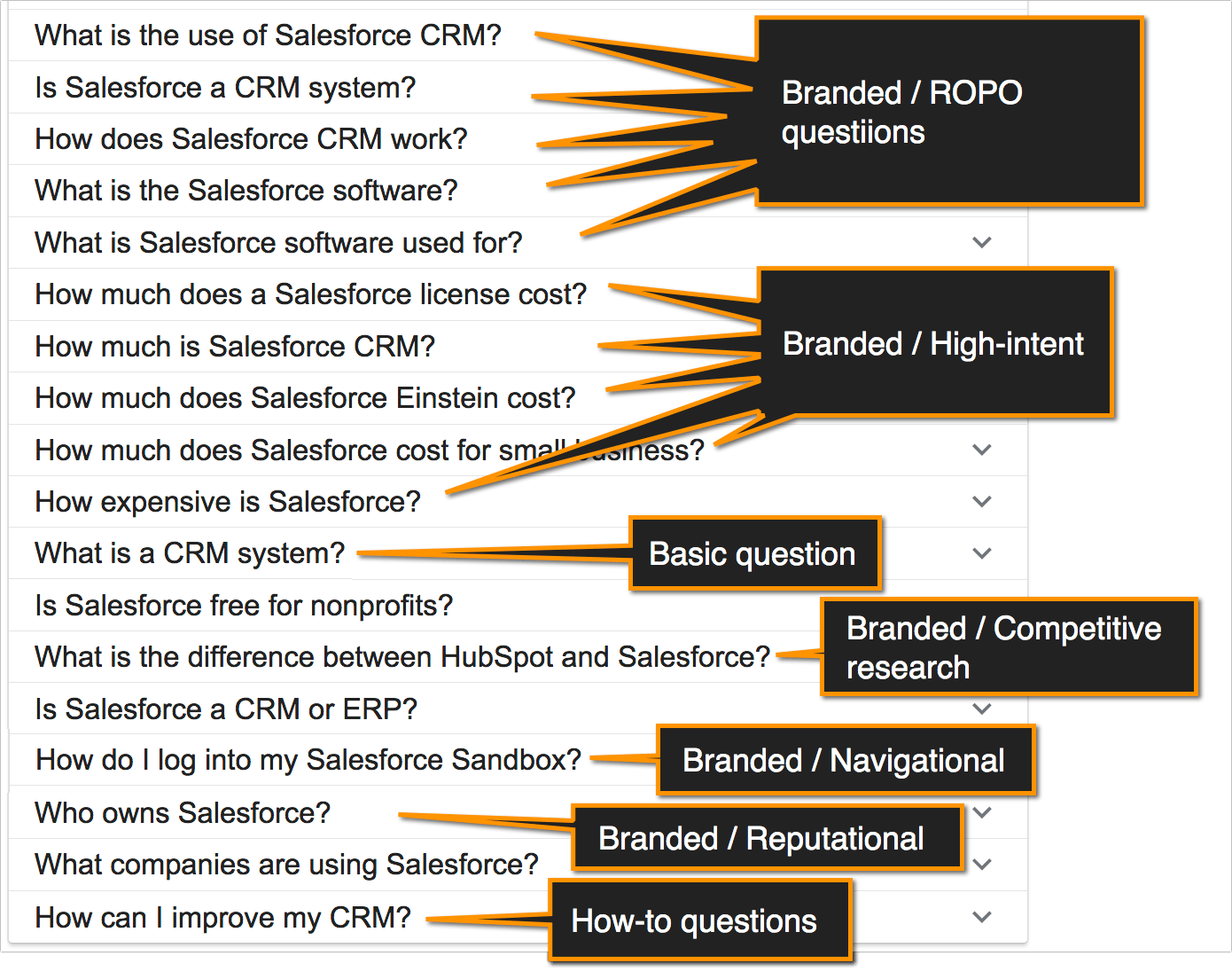
To effectively optimize for voice search, consider these key strategies:
- Consumer-Centric Content Strategy: Gather questions from your customers and attune your content efforts to address their specific needs. Prioritize a content approach that directly serves your target audience.
- Leverage Data Tools: Employ specialized tools to collect and organize voice search data, enabling you to stay attuned to evolving trends and user behaviour.
- Harness Customer Support and Sales Insights: Collaborate with your customer support and sales teams, tapping into their valuable insights and firsthand understanding of your audience’s interests.
By embracing the voice search revolution and implementing these strategies, you can position your content to thrive in this dynamic digital landscape.
Further reading: Top 10 Tips for Voice Search Optimization in 2023



















